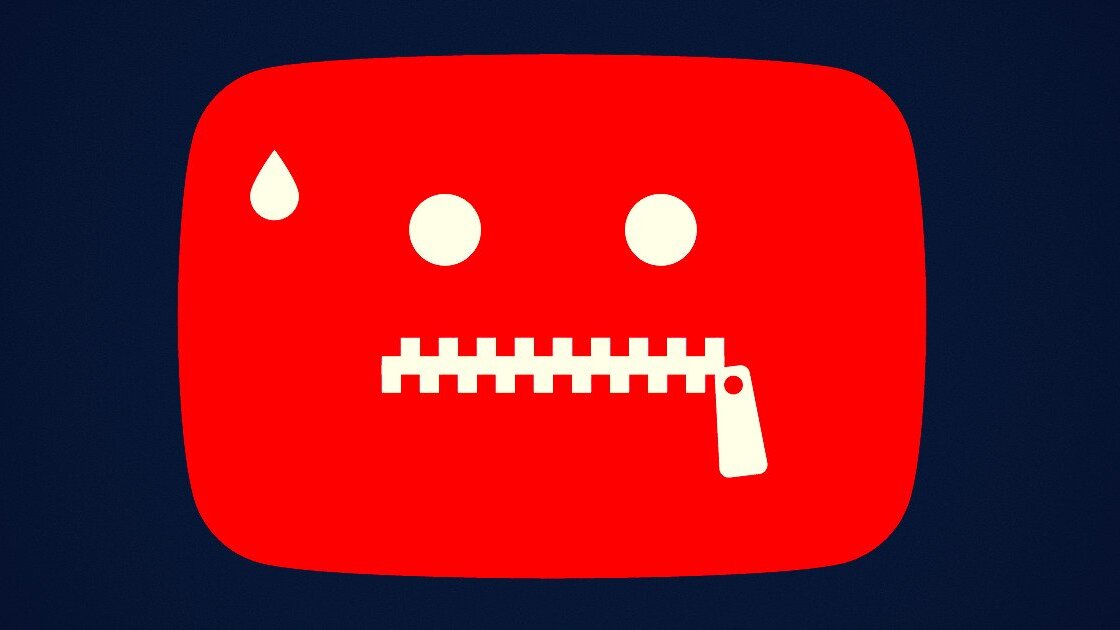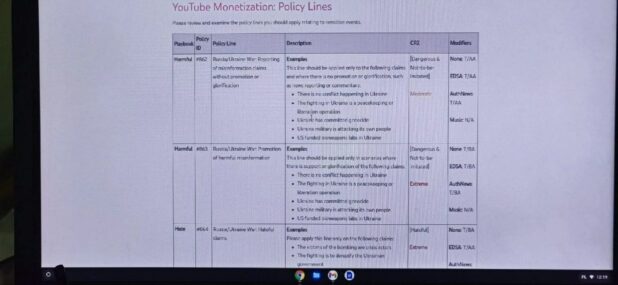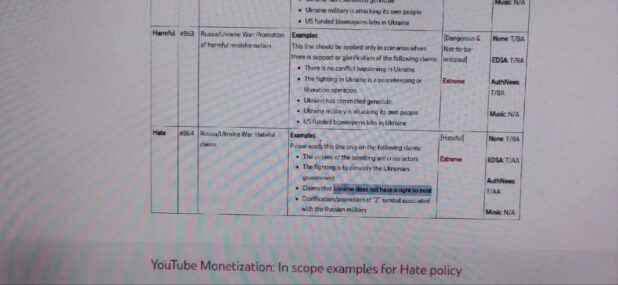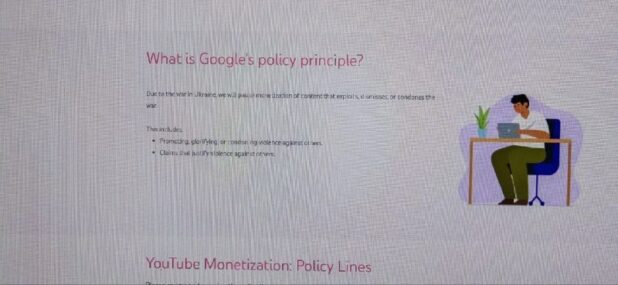Remember when censorship was only about protecting the feelings of women, faggots, and black people?
Just so you remember: that is how this all started. They said that it was about protecting feelings. That’s the stated reason I was banned from everything in 2017. That’s the stated reason Chuck Johnson and MILO were the first people banned from Twitter in 2015. They said: this is all about protecting people’s feelings, and preventing mean people from saying things that hurt people’s feelings.
At some point (we’ve documented the process here on this website), the censors went from being the Feelings Protection Enforcement Police to just telling you you’re not allowed to disagree with the government/media about anything, ever.
RT:
A tutorial for YouTube’s content moderators that emerged on social media on Tuesday shows that the Google-owned platform has labeled a number of critical positions on the conflict in Ukraine “hateful” or “extreme” and can censor or demonetize creators on those grounds. While the parent company Alphabet has not confirmed or denied the screenshots’ authenticity, a Polish contractor who shared them has reportedly been fired.
Six screenshots shared by Russian journalist Andrey Guselnikov on Telegram show internal codes and examples of what YouTube has labeled “harmful” or “hateful” content in an online course mandated for content moderators.
According to the slides, the “glorification/promotion of [the] ‘Z’ symbol associated with the Russian military” is labeled “hate” and “extreme” under policy ID 864. So is saying that the conflict “is to denazify the Ukrainian government,” which is what Russian President Vladimir Putin said in February.
Saying that “Ukraine military is attacking its own people” is also considered problematic, ranging from “harmful-misinformation-moderate” (ID 862) to “harmful-misinformation-extreme” (ID 863) if the powers that be decide it amounts to “promotion or glorification.”
There was no clarification whether either standard would apply to factual reports of Ukrainian artillery targeting Ukrainian citizens living in territories under Russian control, for example.
Another highlighted phrase under policies 862 and 863 is “US funded bioweapons labs in Ukraine.” Presumably the key word here is “bioweapons,” since the existence of “biological research facilities” in Ukraine was recognized by US Under Secretary of State Victoria Nuland in a Senate testimony in March, and the Russian military has repeatedly presented evidence that these labs were funded by the US government, and the Pentagon in particular.
One of the slides shows a list of “out of scope” claims, noting there is no “full-scale block on all content” related to the conflict.
According to Guselnikov, the source of the leaked slides is a Polish national named Kamil Kozera, who used to work for Majorel, a contractor hired by YouTube for content moderation. YouTube somehow identified Kozera from the screenshots and had him fired over the leak. RT cannot independently verify the authenticity of the screenshots, and has reached out to YouTube for comment.
To be clear: this has never been a public Twitter policy. We’ve noted since the beginning of the “Ukraine War” that Twitter was aggressively censoring anything that went against the official narrative. For example, they were deleting all of the videos of Ukrainians torturing people – videos that were uploaded to Telegram by the Ukrainians themselves.
They also began censoring anyone who posted the facts about the false flags and hoaxes done against Russia. They were even banning people for saying that the Ukraine would not win the war against Russia.
This is the first evidence we have that this is an official secret policy, but if you looked at our documentation of the fact, censorship of any disagreement with the government/media war narrative has been obvious and undeniable since the invasion began.
In fact, censorship of Ukraine truth is even more extreme than censorship of Covid truth, which was previously the most extreme censorship. The censorship of the feelings stuff was pretty selective.






